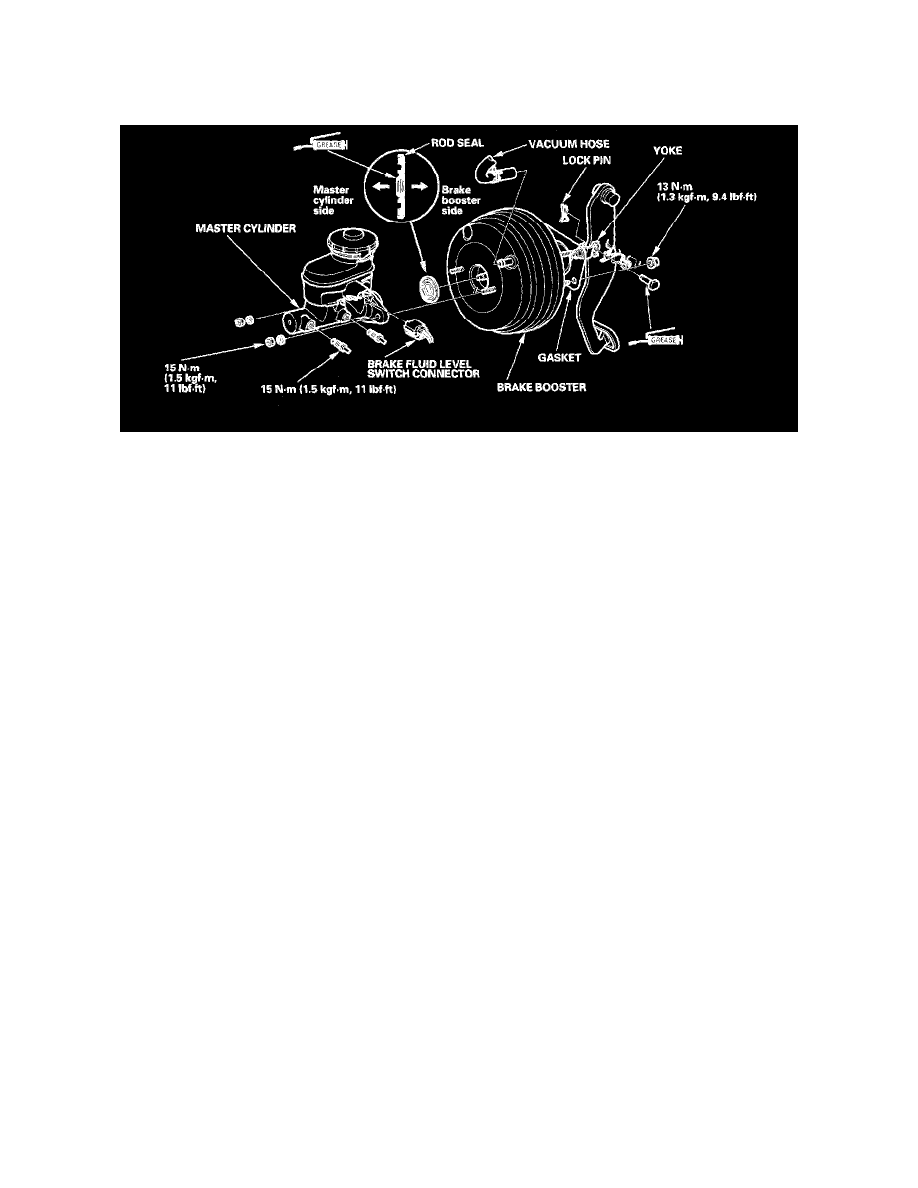S2000 L4-2.2L (2004)

Vacuum Brake Booster: Service and Repair
Master Cylinder/Brake Booster Replacement
NOTE: Do not spill brake fluid on the vehicle; it may damage the paint; If brake fluid does contact the paint, wash it off immediately with water.
1. Disconnect the brake fluid level switch connectors.
2. Remove the brake fluid from the master cylinder reservoir with a syringe.
3. Disconnect the brake lines from the master cylinder. To prevent spills, cover the line joints with rags or shop towels.
4. Remove the master cylinder mounting nuts and washers.
5. Remove the master cylinder from the brake booster.
6. Disconnect the vacuum hose from the brake booster.
7. Remove the lock pin and yoke pin.
8. Remove the four brake booster mounting nuts.
9. Pull the brake booster forward, and remove the brake booster from the engine compartment. Be careful not to bend or damage the brake lines
when removing it.
10. Install the brake booster and master cylinder in the reverse order of removal, and note these items.
^
Replace all rubber parts and the gasket with new ones whenever removed.
^
Coat the lip of the new rod seal with recommended seal grease in the master cylinder set.
^
Install the rod seal onto the brake booster with its grooved side toward the master cylinder.
^
Adjust the pushrod length before installing the booster.
^
Fill the master cylinder reservoir, and bleed the brake system.
^
After installation, check the brake pedal height and brake pedal free play and adjust if necessary.
^
Bleed the brake system.
